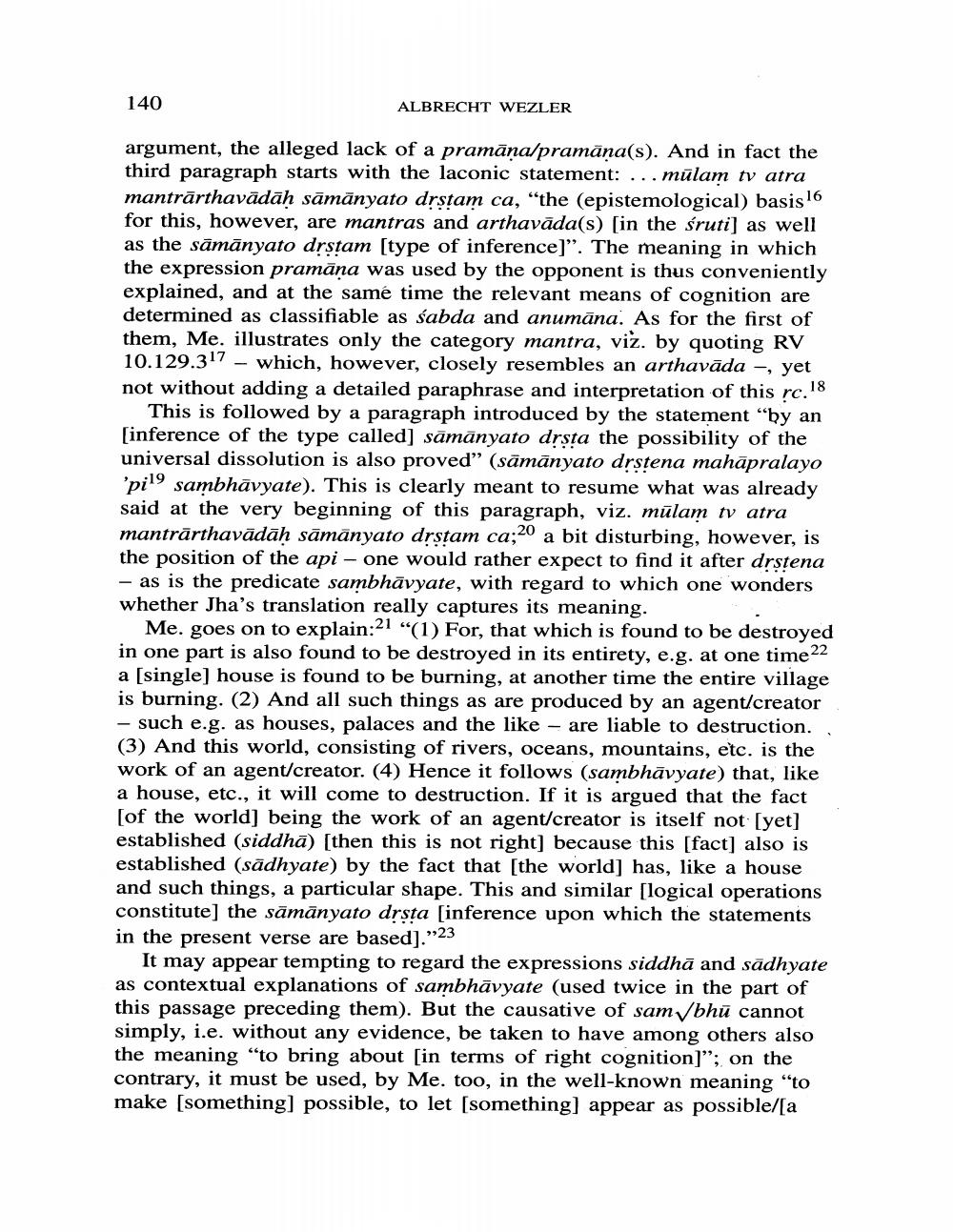________________
140
ALBRECHT WEZLER
argument, the alleged lack of a pramāna/pramāņa(s). And in fact the third paragraph starts with the laconic statement: ... mūlam tv atra mantrārthavādāḥ sāmānyato drstam ca, "the (epistemological) basis 16 for this, however, are mantras and arthavāda(s) [in the śruti] as well as the sāmānyato drstam [type of inference)”. The meaning in which the expression pramāna was used by the opponent is thus conveniently explained, and at the same time the relevant means of cognition are determined as classifiable as śabda and anumāna. As for the first of them, Me. illustrates only the category mantra, viz. by quoting RV 10.129.317 - which, however, closely resembles an arthavāda –, yet not without adding a detailed paraphrase and interpretation of this rc. 18
This is followed by a paragraph introduced by the statement "by an [inference of the type called] sāmānyato drsta the possibility of the universal dissolution is also proved” (sāmānyato drstena mahāpralayo 'pilo sambhāvyate). This is clearly meant to resume what was already said at the very beginning of this paragraph, viz. mulam tv atra manträrthavādāḥ sāmānyato drstam ca;20 a bit disturbing, however, is the position of the api - one would rather expect to find it after drstena - as is the predicate sambhāvyate, with regard to which one wonders whether Jha's translation really captures its meaning.
Me. goes on to explain:21 “(1) For, that which is found to be destroyed in one part is also found to be destroyed in its entirety, e.g. at one time 22 a [single] house is found to be burning, at another time the entire village is burning. (2) And all such things as are produced by an agent/creator – such e.g. as houses, palaces and the like - are liable to destruction.. (3) And this world, consisting of rivers, oceans, mountains, etc. is the work of an agent/creator. (4) Hence it follows (sambhāvyate) that, like a house, etc., it will come to destruction. If it is argued that the fact [of the world] being the work of an agent/creator is itself not [yet] established (siddhā) [then this is not right] because this [fact] also is established (sādhyate) by the fact that [the world) has, like a house and such things, a particular shape. This and similar [logical operations constitute) the sāmānyato drsta [inference upon which the statements in the present verse are based).”23
It may appear tempting to regard the expressions siddhā and sādhyate as contextual explanations of sambhāvyate (used twice in the part of this passage preceding them). But the causative of sambhū cannot simply, i.e. without any evidence, be taken to have among others also the meaning “to bring about [in terms of right cognition)"; on the contrary, it must be used, by Me. too, in the well-known meaning "to make [something) possible, to let (something] appear as possible/[a




